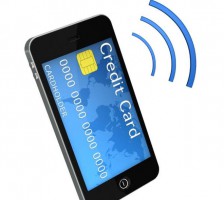
Let’s stop making mobile payments a chore
By Keith Brown, General Manager Product, Scheme and Business Development, BPAY Group
You can make a payment on almost any digital device, but why can it still feel like a chore? Mobile has been spruiked across product and marketing strategies in all industries for as long as the smartphone has been around, and yet a decade later we’re still not as digitally savvy as we’d like to think. We have tablets, smartphones, and smartwatches, but discrepancies still exist for user experience across all these devices.
There’s an influx of mobile-only banks emerging in the U.K., dedicated to ensuring the experience of banking for their customers on the go is as seamless and convenient as possible.
Whilst we’ve still got a fair way to go in Australia, we can expedite the process by adopting a mobile-first mentality.
Statistics show a growing appetite for making payments on the go, yet adoption is slow for new offerings like Apple Pay. Banks have a responsibility to educate their customers about what mobile services are available and assure they’re the safest and most convenient tools for everyday use.
Promoting security and convenience
Offering clear information to customers about the benefits and security of mobile banking is essential to overcoming any past hesitations – particularly from older cohorts – that mobile banking somehow indicates tenuous security. A recent BPAY survey found security and ease-of-use rank as the highest priorities for selecting a bill payments platform, and it’s up to the banks to ensure platforms that promote these priorities are being delivered to their customers.
Banks must prioritise their mobile interface, usability, customer service options, and scope of work in order to remain relevant. It’s not enough to settle with a mobile-friendly website. Customers want a seamless tailored experience across whatever device they choose.
Payments on the go
The PC market has been in decline for the past few years, and it’s all due to the increasing sophistications of smartphones and tablets, which are ever-more capable of organising lives and completing tasks.
Personal banking on desktop is also in decline, particularly amongst young people. A recent BPAY survey found that 56 per cent of bill-payers in the ‘mobile and evolving’ category – predominantly people under 39 years of age – log on to their mobile banking at least once per day, compared to 23 per cent who access their bank on a PC.
It’s evident we are increasingly banking on the move – 80 per cent of the ‘mobile and evolving’ category prefer payment methods they can achieve on the go – more than double any other category identified in the survey. It’s therefore imperative for desktop and PC capabilities to also be available on mobile, enabling customers to manage their finances on the go. Capabilities such as transferring money to a new payee or viewing a bill in full detail often remain exclusive to non-mobile devices, and therefore limit a customer’s ability to complete their tasks at a time and on a device that’s convenient for them.
When payments are top of mind, customers need to have the right tools available to them, no matter where they are. Convenience is not the only dominant factor here; this practice develops financial literacy and ensures payments are made promptly to assist cashflow for all parties involved.
Competition cut-through
There’s new competition coming from every direction in the banking and payments space – instant peer-to-peer transfer, money sharing, bill-splitting, online lay-by, most of which are being driven by emerging fintechs. With marketing and technology teams tasked with innovating whilst cutting costs, prioritising experience on the most popular devices will arguably deliver more valuable ROI and perpetuate greater brand awareness.
For example, amplifying your presence across a variety of devices – especially those used daily – will put your brand in front of your customers, multiple times a day. When money is top of mind, you want to ensure your brand is there at first glance, ready to offer users a safe, reliable and convenient tool to take care of their payments. Greater value will be achieved from investing in the touchpoints your customers use more frequently (i.e. updating bug fixes in a mobile banking app) than the ones they use infrequently (i.e. purchasing new furniture for branches).
When mobile is prioritised, money will move faster and safer – an obvious benefit to both consumers and the banks. Mobile has no signs of disappearing from banking, and it’s at the centre of future technological innovations. Get your customers on board now so they’re prepared for a mobile-first banking world and not left in the dark ages with cheques and cash.


